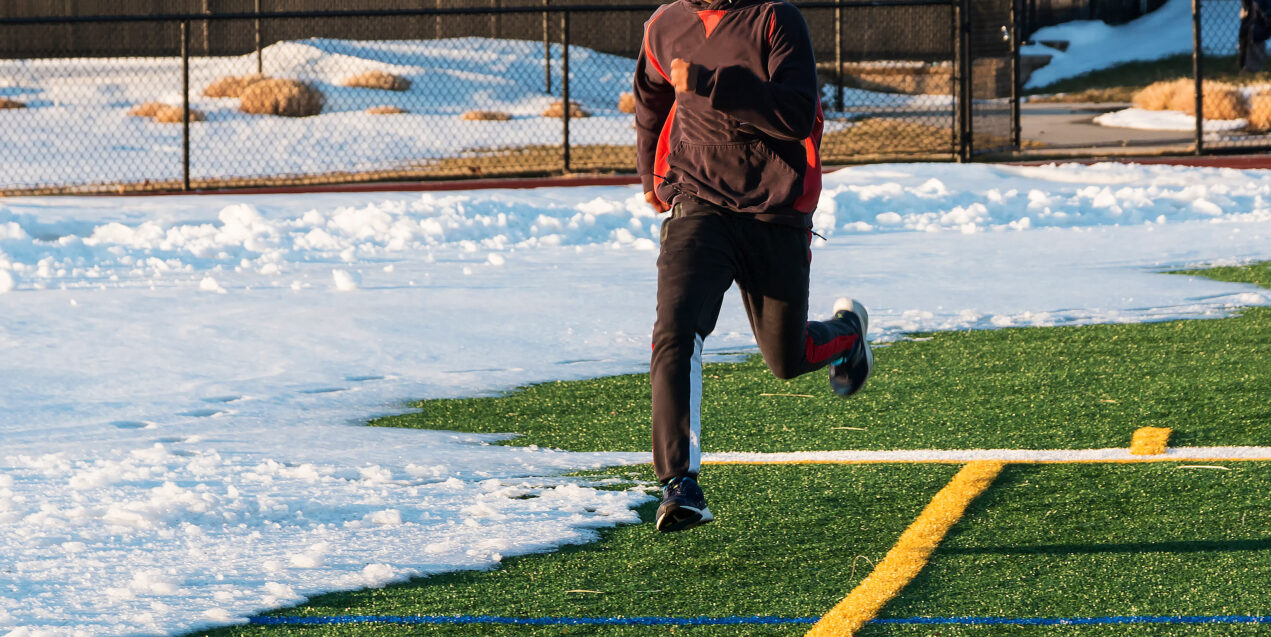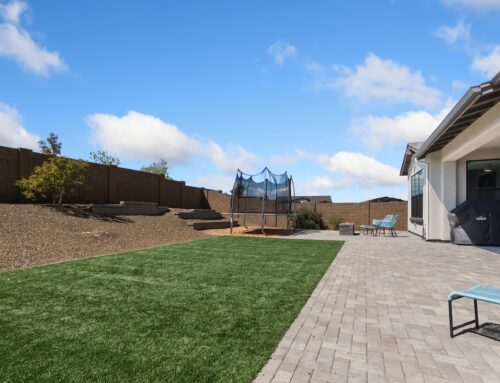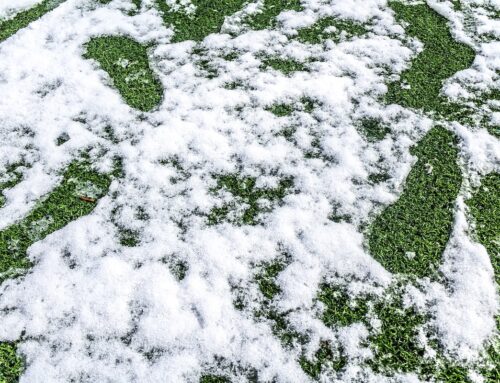Last Updated on December 7, 2023 by ReTurf
In the realm of sports and environmental management, the behavior of snow on different surfaces, particularly on artificial turf versus natural grass, has sparked a significant debate. This subject is not only crucial for athletic field maintenance but also carries broader implications for environmental sustainability and resource management. As climate patterns evolve and urban spaces expand, understanding how snow interacts with these surfaces becomes increasingly vital for both practical and ecological reasons.
Artificial turf, a popular alternative to natural grass in sports fields and recreational areas, presents unique challenges and benefits in snow-prone environments. The debate centers around the efficiency and environmental impact of snow melt on these surfaces. Factors such as the material composition of artificial turf, its heat absorption properties, and its interaction with natural elements are pivotal in this discussion. These considerations are crucial for field managers, urban planners, and environmentalists alike, as they seek optimal solutions that balance functionality, cost, and ecological impact.
Enter ReTurf, a forward-thinking player in the artificial turf industry. For over two decades, ReTurf has been addressing a critical question that echoes in the minds of those purchasing new artificial turf fields: “What do we do with this material when it reaches the end of its useful life?” By offering innovative solutions to this industry conundrum, ReTurf has positioned itself as a key contributor to the sustainable management of artificial turf. Their involvement in processing used artificial turf for reuse and repurposing not only mitigates landfill waste but also presents a cost-effective alternative for various applications. As we delve into the complexities of snow melt on different surfaces, ReTurf’s role and contributions provide a unique perspective on the intersection of sports, environment, and industry innovation.

Synthetic Versus Natural: A Tale of Two Surfaces
The use of artificial turf and natural grass in sports and recreation spaces has a rich history, marked by evolving technologies and changing environmental perspectives. Artificial turf, introduced in the 1960s, was initially developed to overcome the limitations of natural grass, especially in areas with harsh weather conditions or limited natural resources. Over the years, its design has advanced significantly, offering enhanced durability, safety, and aesthetic appeal. Today, artificial turf is not only used in sports fields but also in residential lawns, playgrounds, and public parks, reflecting its versatility and growing acceptance.
Natural grass, on the other hand, has been the traditional choice for sports fields for centuries. Its natural properties, such as shock absorption and traction, make it a preferred surface for many athletes. Moreover, natural grass contributes to environmental health by facilitating carbon sequestration, supporting biodiversity, and aiding in groundwater recharge. However, it requires significant maintenance, including watering, mowing, and fertilization, which can have environmental and financial implications.
The environmental considerations for both surfaces are complex. Artificial turf, while low-maintenance and durable, raises concerns regarding its heat absorption properties, potential runoff of infill materials, and end-of-life disposal challenges. Its synthetic nature also means it does not offer the ecological benefits of living grass. Natural grass, while ecologically beneficial, can consume substantial water resources and often requires chemical treatments to maintain its quality, posing potential risks to local ecosystems.
As the debate continues, both surfaces present a unique set of advantages and challenges. The choice between artificial turf and natural grass involves careful consideration of factors like local climate, intended use, maintenance capacity, and environmental impact. This backdrop sets the stage for exploring how these two surfaces interact with snow, a question of particular relevance in colder climates and a key aspect of sustainable sports field management.

Understanding Snow Melting Dynamics
The basic science of snow melting is a fascinating interplay of thermal dynamics and environmental factors. Essentially, snow melts when it absorbs enough energy to change from a solid to a liquid state. This energy primarily comes from sunlight, which warms the snow directly, and ambient temperature, which heats the air around the snow.
Sunlight plays a pivotal role in this process. The intensity and duration of sunlight exposure directly affect the rate of snow melting. Snow on surfaces that receive more direct sunlight will melt faster than on those in shaded areas. Ambient temperature is equally crucial; higher temperatures accelerate melting by providing more energy to the snow.
The type of surface beneath the snow also significantly influences the melting process. Different materials absorb and retain heat differently, affecting how quickly they can transfer heat to the snow. Artificial turf and natural grass have distinct thermal properties that impact this process. Artificial turf typically has a higher thermal conductivity than natural grass, meaning it can transfer heat to the snow more efficiently, potentially leading to faster melting. However, the specific materials used in artificial turf can vary, and some types may retain heat differently.
Natural grass, with its organic composition, tends to have lower thermal conductivity compared to synthetic materials. It may not warm up as quickly or retain heat as effectively as artificial turf, potentially resulting in slower snow melting. However, the natural soil under grass can sometimes retain heat better than the base materials used under artificial turf, which can influence melting rates.
This comparison of thermal properties between artificial turf and natural grass underlines the complexity of predicting and managing snow melt in various settings, an essential consideration for field maintenance and environmental management.
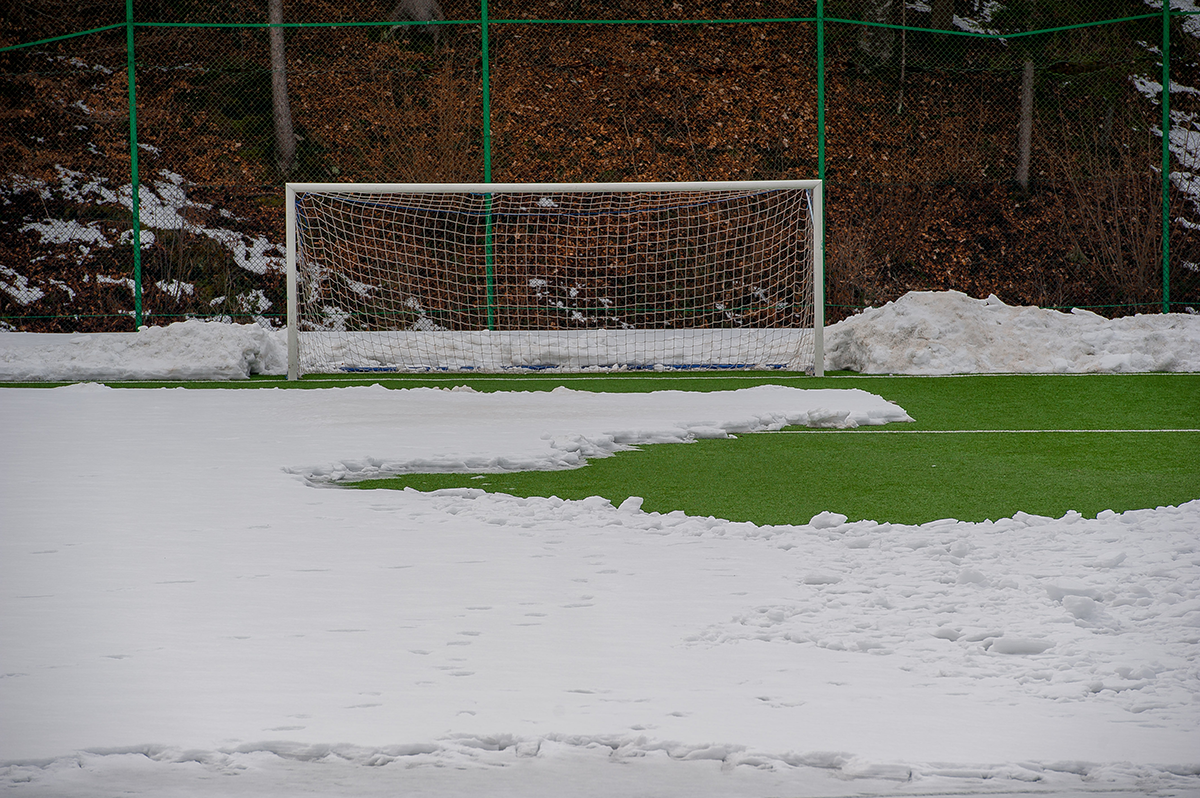
Artificial Turf: Composition and Cold Weather Interactions
Artificial turf, a synthetic alternative to natural grass, is composed of several layers, each contributing to its overall functionality and resilience. The uppermost layer typically consists of synthetic fibers, often made from polyethylene or polypropylene, designed to mimic the look and feel of natural grass. These fibers are usually tufted into a backing material, which provides the necessary structural support. Beneath this, a layer of infill, often made from crumb rubber, sand, or a combination of both, is added to provide cushioning, stability, and support for the fibers.
In cold weather and snowy conditions, the composition of artificial turf plays a crucial role in how it interacts with snow. The synthetic fibers do not absorb water like natural grass, which means snow and ice can sit on the surface without causing the material to become soggy or waterlogged. This characteristic can be beneficial for quick and easy snow removal. Additionally, the dark color of most artificial turf can aid in melting snow faster by absorbing more sunlight and heat.
However, there are challenges associated with artificial turf in snow-prone regions. The surface can become slippery when icy, posing a risk for athletes or users. Infill materials can also harden in extremely cold temperatures, reducing the surface’s cushioning effect and potentially making it less safe for sports activities. Moreover, the removal of snow from artificial turf requires careful handling to avoid damaging the fibers or dislodging the infill material.
Despite these challenges, artificial turf remains a popular choice in many regions due to its low maintenance requirements compared to natural grass. It doesn’t require watering, fertilizing, or mowing, making it an appealing option for areas where water conservation is a priority or where maintaining natural grass is logistically challenging. The durability and consistency of artificial turf, regardless of weather conditions, continue to make it a preferred choice for many sports and recreational facilities.
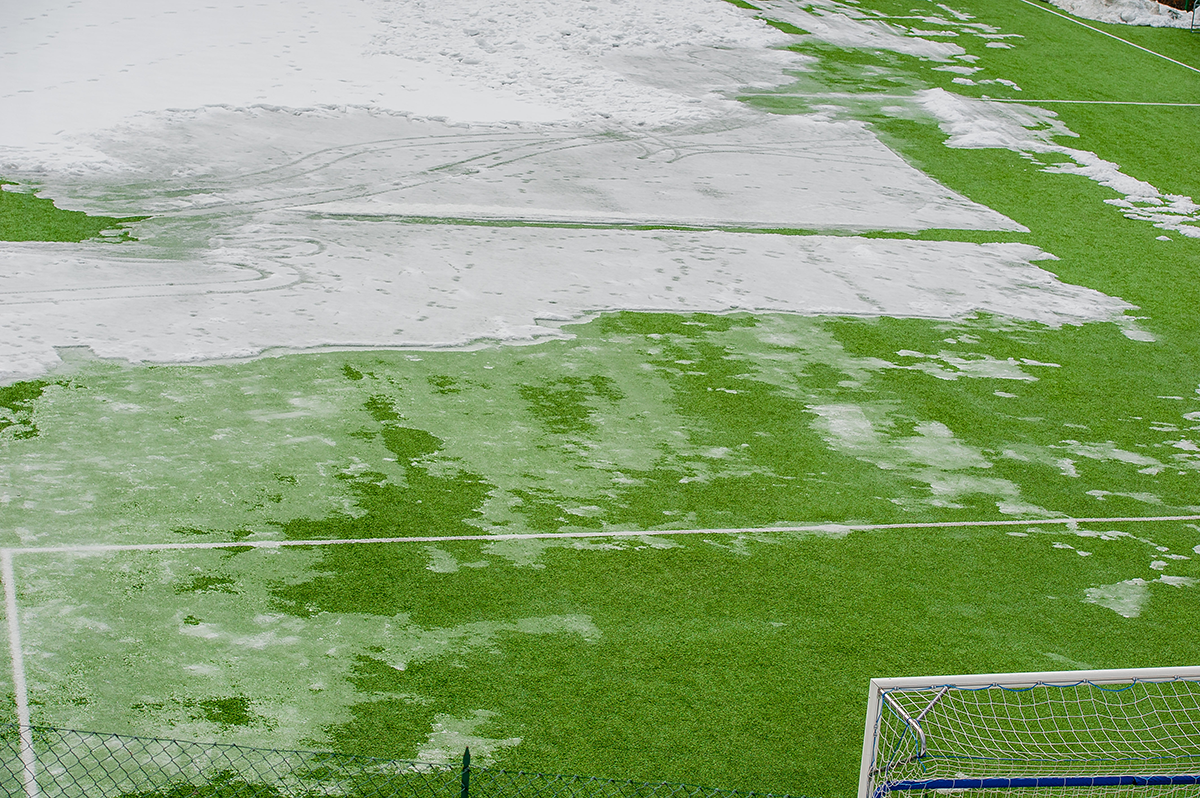
Natural Grass and Snow: The Traditional Terrain
Natural grass, with its organic and dynamic nature, presents a traditional approach to sports and recreational surfaces, particularly in how it interacts with winter conditions. During the colder months, grass enters a dormant state, reducing its growth and metabolic activity. This dormancy is a natural defense against the harsh winter environment, allowing grass to conserve energy and resources. The blades of grass may turn brown and lose their lush green appearance, but the root systems typically remain alive and resilient under the snow.
When it comes to handling snow and ice, natural grass fields offer unique characteristics. The porous nature of soil under the grass allows for some natural drainage of meltwater, reducing waterlogging and ice formation on the surface. Additionally, the texture of natural grass provides a certain level of traction, even in snowy conditions, which can be advantageous for outdoor activities. However, when snow is compacted into ice, natural grass fields can become slippery and potentially hazardous.
The environmental impact of maintaining grass fields in winter is a significant consideration. While dormant grass requires less maintenance than during the growing season, the use of de-icing agents to manage ice can be detrimental to the grass’s health and the surrounding ecosystem. These chemicals can leach into the soil and groundwater, posing risks to plant and animal life. Furthermore, frequent removal of snow from grass fields can damage the turf, leading to increased maintenance efforts in the spring, such as reseeding or sodding.
Despite these challenges, natural grass remains a favored choice for many, especially in regions where the environmental impact of artificial alternatives is a concern. Its ability to support biodiversity, contribute to carbon sequestration, and offer a natural playing surface are qualities that continue to make it a viable option for sports fields and recreational areas. However, the choice between natural grass and artificial turf in snow-prone areas requires careful consideration of both maintenance requirements and environmental impacts.
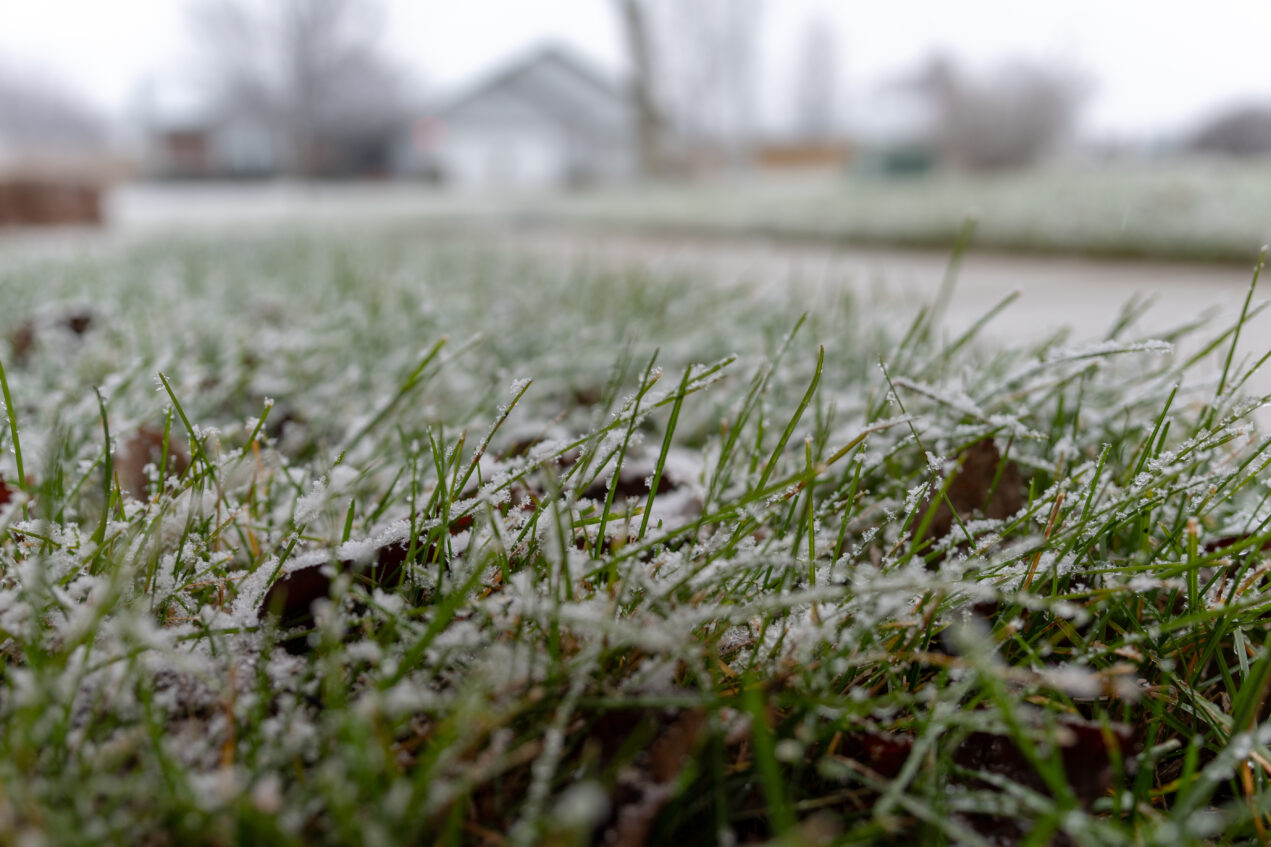
Navigating Winter Surfaces: Strategies and Considerations
When managing snow on sports and recreational surfaces, different strategies apply to artificial turf and natural grass, each with its cost implications and environmental impacts. For artificial turf, snow removal should be conducted with care to avoid damage to the fibers or dislodging the infill. Tools like plastic shovels or brushes are recommended over metal ones to prevent tearing the surface. Additionally, while artificial turf may not need treatments for snow and ice melting, consideration should be given to the potential slipperiness of the surface in icy conditions.
For natural grass, the approach is more about balancing snow removal with protecting the dormant grass. Heavy equipment should be avoided to prevent soil compaction and damage to the root system. If de-icing is necessary, choosing environmentally friendly products can minimize harm to the grass and surrounding ecosystems. In terms of cost, while natural grass may require less maintenance in winter, the potential for spring repair and rejuvenation can add to annual maintenance expenses.
When choosing between artificial turf and natural grass, regional climate plays a significant role. In areas with heavy snowfall and cold temperatures, artificial turf might offer more consistent usability throughout the year. In contrast, regions with milder winters may favor natural grass for its ecological benefits and natural aesthetics. Ultimately, the decision should balance practicality, budget, environmental impact, and the specific needs of the intended users.

Concluding Thoughts: Sustainable Surfaces for Tomorrow
This exploration into the dynamics of snow on artificial turf versus natural grass surfaces highlights the complexities involved in choosing the right material for sports and recreational areas. Each surface presents its unique set of advantages and challenges, particularly in the context of winter weather and environmental sustainability.
In making these choices, it’s essential to consider not only the immediate functional requirements but also the long-term environmental impact and maintenance costs. Solutions like those offered by ReTurf, which focus on repurposing and recycling artificial turf, play a crucial role in addressing the environmental concerns associated with synthetic materials. Their commitment to sustainable practices offers a glimpse into the future of the artificial turf industry, where innovation and environmental responsibility can coexist.
As we navigate these considerations, the decision between artificial turf and natural grass should be informed by a comprehensive understanding of each surface’s characteristics, regional climate, and the specific needs of the community. The goal is to create safe, functional, and environmentally responsible spaces that serve their intended purpose while contributing positively to our ecological footprint.
Ready to get started with your turf lawn? Check us out!

